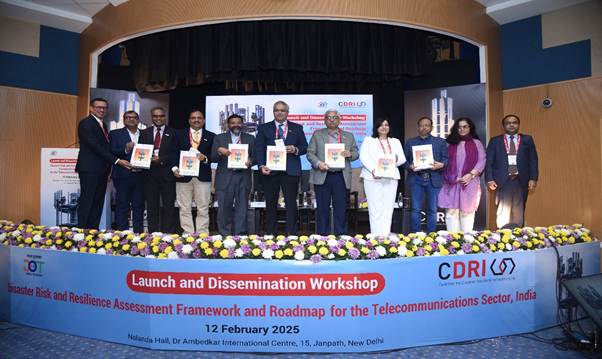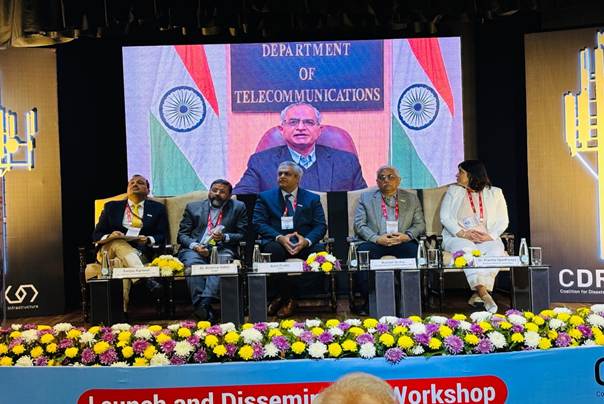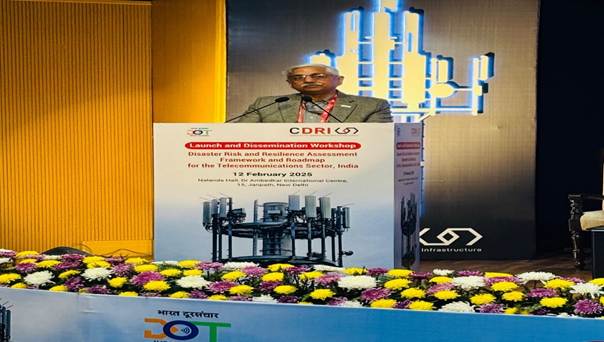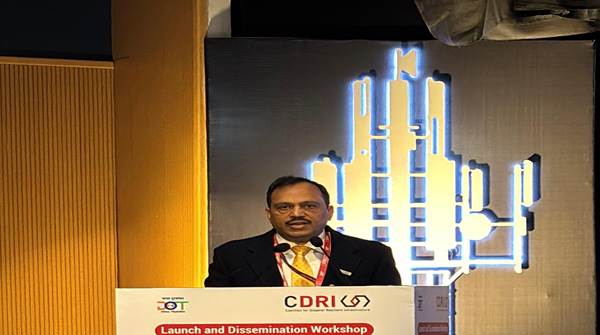Ministry of Communications
DoT and CDRI Unveil Roadmap to Strengthen India’s Telecom Resilience
Department of Telecommunications (DoT) and the Coalition for Disaster Resilient Infrastructure (CDRI) Released Disaster Risk and Resilience Assessment Framework
CDRI presents a telecom resilience framework aligned with global resilience frameworks
Key strategic measures identified to enhance telecom sector resilience
DoT calls for collective action from the government, industry, and disaster agencies to build a disaster-resilient telecom ecosystem
A disaster risk and resilience index developed for 5 States
प्रविष्टि तिथि:
12 FEB 2025 4:09PM by PIB Delhi
The Department of Telecommunications (DoT), in collaboration with the Coalition for Disaster Resilient Infrastructure (CDRI), today launched a comprehensive report on Disaster Risk and Resilience Assessment Framework (DRRAF), marking a major step towards strengthening India’s telecom sector against disasters. The report is part of a comprehensive study on National and Sub-national Disaster Risk & Resilience Assessment for the Telecommunication Sector by CDRI. The study was conducted across five states—Assam, Odisha, Tamil Nadu, Uttarakhand, and Gujarat—focusing on disaster risks and resilience strategies specific to the telecom sector. DoT facilitated the necessary coordination with State Governments, Telecom Service Providers, and Infrastructure Providers to arrange the data required for the study.

In his message in the inaugural session, Dr. Neeraj Mittal, Secretary (Telecom) & Chairman, Digital Communications Commission (DCC), emphasized that building telecom resilience is a national priority. He reiterated DoT’s commitment for ensuring seamless connectivity prior, during, and after disasters, aligning with the UN’s ‘Early Warning For All by 2027’ initiative. He called for coordinated action from Government agencies, telecom operators, and disaster management bodies to ensure India’s telecom infrastructure remains robust in the face of natural calamities.

Recalling his experience with disasters, Mr. Manish Sinha, Member (F), DoT, emphasized the importance of telecom network post disasters. He further highlighted that technology has improved further. He further highlighted the outcomes of the study lays out a roadmap for minimizing service disruptions, strengthening infrastructure, and improving emergency response mechanisms.


Emphasizing the importance of inter-ministerial coordination, Shri Sanjay Agrawal, DDG (DM), DoT, highlighted the invaluable support of all LSAs, TSPs, Infrastructure Providers, and Industry Associations (DIPA, COAI, IBF), along with government agencies such as NDMA and SDMAs. He added that their valuable insights and on-ground experiences have significantly enriched this study, ensuring that the recommendations are not only technically sound but also practically implementable.
Addressing the impact and potential of the study and framework, CDRI Director General Amit Prothi emphasized the telecom sector’s significant contribution to India’s GDP, highlighting that resilient telecom networks are critical for economic growth, disaster response, and uninterrupted connectivity. He further stated that the CDRI’s study offers a scalable model, actionable insights, and global best practices for resilient communication services.
The DoT has been proactively implementing several strategic initiatives to enhance disaster preparedness and telecom resilience, including:
· Real-time coordination with LSAs, State Governments, and telecom operators for rapid disaster response.
· Nationwide implementation of an indigenous Cell Broadcast System for emergency alerts.
· Deployment of Public Protection and Disaster Relief (PPDR) networks in collaboration with the Ministry of Home Affairs.
· Strengthening regulatory support for telecom operators to ensure quick restoration of services.
· Promoting satellite-based communication and High Altitude Platform Systems (HAPS) to maintain connectivity in disaster-hit regions.
Key Insights and Recommendations from the Study:
The study conducted a multi-hazard risk assessment across 0.77 million telecom towers, mapping risks from floods, cyclones, earthquakes, and other disasters. A disaster risk and resilience index has been developed to assess the vulnerability of telecom infrastructure based on disaster intensity, frequency, and impact.
The Report has outlined a set of key recommendations aimed at strengthening the sector's resilience and preparedness in the face of disasters. These recommendations emphasize a multi-pronged approach, combining technical enhancements, governance reforms, financial investments, and stakeholder collaboration.
The key strategic recommendations include:
- Enhancing technical planning and design to ensure telecommunications infrastructure can withstand disaster impacts.
- Developing a robust multi-hazard information repository to enable data-driven risk management.
- Implementing risk-informed governance to integrate disaster resilience into sectoral policies.
- Developing risk-sharing instruments to safeguard telecom operators against financial vulnerabilities.
- Establishing a cross-sectoral framework to drive stakeholder collaboration and coordinated response mechanisms.
- Strengthening financial arrangements to support the resilience of critical telecom infrastructure.
- Promoting last-mile connectivity and information access to ensure inclusivity during emergencies.
- Leveraging digital and collaborative efforts to enhance service restoration in crisis situations.
- Upscaling institutional capacity and last-mile expertise to improve emergency preparedness.
- Implementing precise monitoring mechanisms to enhance service quality and reliability.
These recommendations aim to fortify the telecom sector’s ability to withstand disasters, ensuring seamless connectivity and rapid restoration of services. With DoT’s leadership and multi-stakeholder engagement, the adoption of this roadmap will empower India’s telecom sector to effectively anticipate, respond to, and recover from disasters, ensuring uninterrupted communication even in times of crisis.
With this risk and resilience study and framework, CDRI aims to mainstream resilience principles in telecom infrastructure at the policy and planning level, and promote cross-sectoral collaboration and coordination, both in India and globally.
About CDRI
The Coalition for Disaster Resilient Infrastructure (CDRI), an international organization launched by the Prime Minister of India, is a global partnership of 49 members dedicated to climate and disaster-resilient infrastructure solutions. It is a partnership of national governments, UN agencies and programmes, multilateral development banks and financing mechanisms, the private sector, and academia. CDRI advances the cause of climate and disaster resilient infrastructure (DRI).
<><><>
Samrat/Allen
(रिलीज़ आईडी: 2102281)
आगंतुक पटल : 2252